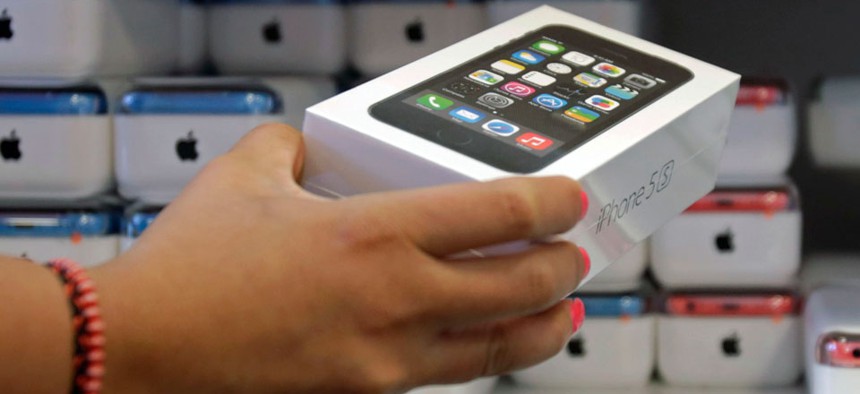How iPhones are Forcing Banks to Rethink Brick-and-Mortar Branches

Alan Diaz/Shutterstock.com
The biggest banks are reshaping how they interact with retail customers and in many cases shrinking their expansive branch networks.
American banks are reconsidering their urge to put a branch on every corner, as more customers use mobile phones to do everything from depositing checks to paying bills.
“The definition of a branch is changing from what you’d traditionally think.” said CEO Brian Moynihan during the bank’s call with analysts to discuss its fourth quarter results . About 9% of the bank’s check transactions during the fourth quarter were conducted via mobile devices like iPad and iPhones.
“That’s up from 7% in the quarter before and [that function] didn’t exist until basically the third quarter of [2012],” Moynihan noted. ”We don’t know exactly where this goes ’cause it will depend on customer behavior but what we do know is that we have to dominate the physical side and the e-commerce online mobile side at the same time.”
As a result, the biggest US banks are reshaping how they interact with retail customers and in many cases shrinking their expansive branch networks, which reached a peak in 2009 of 99,544 but have since receded by 3 percent, according to June 2013 data from the Federal Deposit Insurance Corp.

“It’s all about right-sizing and re-thinking the branch network,” said David Albertazzi, senior analyst at the Aite Group, who is consulting with a number of banks aiming to reconfigure their banking operations. ”It’s about transferring the branches from where just basic transactions occur to [being] more relationship driven.”
In many ways, it’s about figuring out how to squeeze more money from customers during a tough time for banks to make money , given the meager rate environment.
Bank of America plans to trim nearly 20 percent of its brick and mortar retail branch network—a process which effectively began back in 2009. The bank has already reduced its retail branches by 950 branches, or 15.5 percent over the past four years and is aiming to cut about 150 more in 2014. At the same time, it’s spending about $3 billion a year to improve its technology and infrastructure around mobile and banking.
“Use of alternative delivery channels [e.g., mobile banking] is increasing,” said Moody’s analyst Allen Tischler. “We’re seeing less square footage and more focus on sales and services, as opposed to traditional teller transactions.”
About 20% of all banking transactions are conducted using paper checks, down from 60% in the early 2000, Albertazzi said.
Not every bank is scaling bank in the face of the digitalization of banking. JP Morgan Chase has increased its number of branches by nearly 9 percent to 5,630 at the end of last year from 5,154 branches in 2009 (the bank inherited Washington Mutual branches when it acquired the troubled institution from the FDIC in 2008). That said, the bank has been investing heavily in technology and believes that mobile and online transactions are one of its fastest growing area in retail banking, according to a spokeswoman.
Moody’s Tischler also noted in a recent research report that lenders like US Bancorp are growing their bank branches selectively as a way to increase market share at a time when big financial mergers are hampered by tougher financial regulation.
NEXT STORY: U.S. to Achieve Energy Independence by 2035





